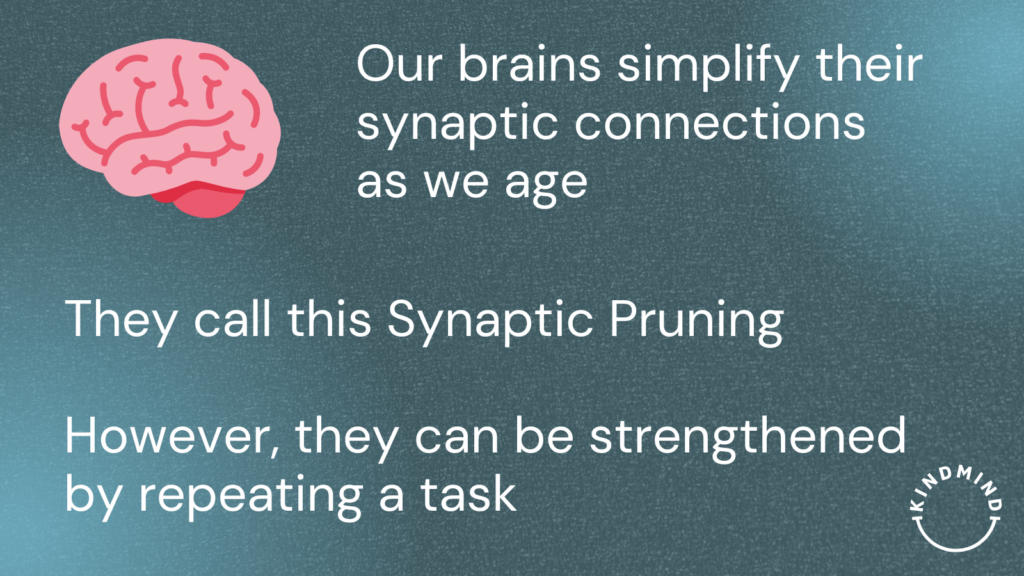As a savvy business leader, you know that a highly productive team is the cornerstone of success. But how can you inspire your employees to perform at their best and achieve remarkable results consistently?
Enter “habit-stacking” – a game-changing productivity method key to transforming your workplace. By seamlessly integrating new habits with existing ones, habit-stacking empowers employees to achieve peak performance and fosters a culture of productivity.
In this article, we’ll delve into the world of habit-stacking and explore how it can measurably revolutionise your team’s productivity. We’ll unravel the science behind habit formation, identify core productivity habits within your workforce, and help you select complementary practices that create a productivity powerhouse.
What is habit-stacking, and why does it matter?
Habit-stacking involves building new habits by anchoring them onto existing ones, leveraging the power of routines ingrained in your employees’ daily lives. By doing so, employees can effortlessly integrate positive behaviours, enhancing their productivity and overall performance.
The science behind habit formation
At the core of habit-stacking lies the science of habit formation.

Our brains are wired to seek efficiency and conserve energy by automating repeated actions. As our brains age, they continue to simplify these synaptic connections. The habits we form over time become second nature, and those we try for a short while (or fail to practice) flop. They call this Synaptic Pruning, a subconscious decision to choose efficiency when managing daily life.
Synaptic Pruning typically occurs between the ages of 2 to 20-25, but research has shown that adults can respond to sensory or action stimuli to learn new synaptic connections. So, through practice, accountants become more attuned to numerical problem-solving, and cab drivers know the best ways to get places.
Picking up new habits is entirely possible, but how you learn to make them stick counts. This is where habit-stacking comes in.
Understanding this neuroplasticity allows employers to create a fertile ground for new habit formation, leading to lasting changes in employee behaviour.
Habit-stacking means combining an existing habit with one you are learning to create a brain connection between the two tasks. The more you practice, the stronger the brain connection and the likelihood that the new habit will stick.
Let’s say you need to start checking in with the sales team more regularly, but currently, you fail to find the time. However, you are very good at checking your emails every morning at 9 am. Add the habit you wish to learn to the back of your formed habit. In this case, you’d say to yourself, “After checking my emails for 10 mins every morning, I’m going to jump on Slack and check in with the sales team to see where we’re at”. Before long, you’ll have formed a new productivity habit AND improved your relationship with the sales team. WIN-WIN!
The impact of habit-stacking on employee performance
As employees adopt new habits that align with workplace objectives, their efficiency soars, time management improves, and work quality flourishes. Habit-stacking also nurtures a sense of accomplishment, boosting morale and fostering a positive work environment where employees feel empowered to excel.
How leaders can immediately help their teams become more productive by forming a new leadership habit
One of our biggest tasks as leaders is managing our team effectively. But that’s been made more difficult now that our team is scattered across locations with hybrid work. To counter this, we’ve seen increased team meetings to keep up-to-date with progress. The problem is that this takes staff away from work, cutting output. Here’s how to stop that using a quick team management habit-stacking technique.
Let’s say you open your computer and start by checking your emails daily. Add a task to your diary to check in and connect with your key teams for 10 mins afterwards.
It looks something like this. “At 9 am, I’ll check my emails for 10 mins; afterwards, I’ll log into my comms channel and catch up with team A for 10 more minutes. In that 10 minutes, I need to gain insight into progress and possible problems, delegating where necessary.”
What happens is that your team starts to feel and act more autonomously, you feel kept in the loop more, and the need for as many meetings diminishes. Remember, the more disciplined you become in incorporating those check-ins, the more likely it is to stick. Benefiting your staff and business.

How to start habit-stacking among your team – It begins with recognising key team players
Now that you have started forming your habits and seeing productivity improve, it’s time to create new patterns within your team. It begins by recognising your team’s existing productivity habits.
Spend some time with your team and watch how they behave. Some employees already have excellent time management skills, while others excel at effective communication or task prioritisation. Acknowledging these strengths forms the foundation on which habit-stacking can build, maximising the potential for growth and productivity.
Here’s what to look for
- Time management experts – Time management is often the backbone of productivity. Some employees excel in prioritising tasks, setting realistic deadlines, and adhering to schedules. Recognise proficient time managers who provide valuable insights and examples for others to follow.
- Communication experts – Employees with strong communication skills are vital to any high-performing team. Their ability to articulate ideas, actively listen, and collaborate efficiently is indispensable. Identifying such individuals helps in fostering open communication and elevating the overall team’s productivity.
- Goal-orientated experts – Look for team members who consistently exhibit a goal-oriented mindset. These individuals set ambitious objectives and work diligently to achieve them. They motivate others to strive for excellence, developing a powerful precedent for the team.
- Adaptability and resilience experts – In today’s dynamic work environment, adaptability and resilience are crucial traits. Employees who embrace change, handle challenges with poise, and learn from setbacks contribute significantly to the team’s overall productivity.
- Continuous learning enthusiasts – Identify employees who prioritise constant learning and self-improvement. These individuals are committed to enhancing their skills and inspiring others to embrace a growth mindset, propelling the team towards higher productivity.
Now that we’ve recognised the core productivity habits within your team, it’s time to explore complementary practices that can be skillfully integrated through habit-stacking. Let’s uncover the art of selecting these habits and optimising your team’s productivity potential.
Creating complementary habits: The key to elevating team productivity
Complementary habits are pivotal in habit-stacking, enhancing core habits and driving employee productivity to new heights. These habits act as force multipliers, fortifying the strengths of individuals within your team.
You can start to identify these through
- Daily planning and reviews – Encourage employees to plan their day and review their progress at the end of each day. This habit complements effective time management and ensures that tasks are tackled efficiently.
- Active delegation – For team leaders and managers, fostering a habit of active delegation can significantly improve productivity. Allowing teams to take ownership of tasks that align with their skills allows for better time utilisation and a more balanced workload.
- Focused single-tasking – Encourage employees to cultivate a habit of single-tasking rather than multitasking. Employees can achieve higher quality work and increased concentration by focusing on one task at a time.
- Regular breaks and physical activity – Complement your team’s goal-oriented mindset with habits prioritising well-being. Encourage short breaks and physical activities during the workday, as they boost energy levels, creativity, and overall productivity.
How you get your team on board with change
Changing team dynamics can be tricky. There will always be those who naturally resist; how you broach resistance and turn it into adoption counts.
Involve employees in the habit selection process to increase buy-in and commitment. Conduct team meetings to discuss potential complementary habits and let employees share their preferences.
Encourage employees to begin with a few manageable complementary habits, gradually incorporating more as they become comfortable. This approach ensures a smooth transition and sustainable progress.
As an employer, demonstrate the selected complementary habits in your work routine. Lead by example to inspire employees and reinforce the importance of habit-stacking.
Remember, employee wellness plays a significant role in the effectiveness and sustainability of habit-stacking within the workplace. Physically and emotionally happier staff are measurably more engaged, meaning they are likelier to try and adopt new working methods.
How to craft a habit-stacking plan for your team
Crafting a well-designed habit-stacking plan is the cornerstone of fostering a culture of productivity within your team. By following these steps, you can create a roadmap that aligns with your team’s goals and paves the way for enhanced performance.
- Assess your team’s goals and needs – Make sure you identify the goals you want to achieve through habit-stacking. Whether boosting overall productivity, improving communication, or enhancing creativity, understanding your team’s unique needs will help tailor the plan accordingly.
- Select core and complementary habits – Based on the core productivity and complementary patterns identified earlier, choose a set of practices that align with your team’s objectives. Ensure these habits are relevant and achievable and will positively impact daily work routines.
- Communicate the plan clearly – If you are implementing a habit-stacking plan, you must ensure clear communication. Clearly explain the purpose of introducing new habits and how they complement existing practices. Encourage open discussions and address any concerns or questions.
- Foster a supportive environment – Create a climate that supports habit development and encourages employees to collaborate. Acknowledge progress, celebrate achievements, and provide constructive feedback to motivate everyone.
- Introduce accountability measures – Establish mechanisms to track progress and keep employees engaged. Regular check-ins, progress reports, or even team challenges can reinforce the habit-stacking initiative.
- Encourage consistency – Consistency is key to habit formation. Encourage employees to stick with the habit-stacking plan, even when faced with challenges. Remind them of the long-term benefits and the positive impact on their individual growth and team success.
- Gradually add new habits – As the habit stacking plan takes root and initial habits become ingrained, consider gradually introducing new practices. Avoid overwhelming employees by spacing out habit additions and focusing on mastery before moving forward.
Overcoming challenges and nurturing employee productivity
Implementing habit-stacking in the workplace may encounter obstacles, but with the right strategies, you can turn challenges into stepping stones for growth. Here’s how to address common hurdles and maintain a thriving work culture.
Some employees may initially resist adopting new habits. To combat this, provide ample support and emphasise the benefits of habit-stacking. Share success stories from other team members or companies to showcase its positive impact.
Busy schedules can deter employees from dedicating time to building new habits. Please encourage them to start with small, time-efficient practices that can fit seamlessly into their routines, gradually expanding as they gain confidence.
Accountability is crucial for habit formation. Consider establishing buddy systems or support groups where employees can check in with each other regularly, providing encouragement and reinforcement.
Sustaining motivation throughout the habit-stacking journey is essential. Celebrate milestones, publicly acknowledge employees’ progress, and provide incentives to foster continued commitment.
Stay flexible and open to adapting the habit-stacking plan based on feedback and results. Listen to employee suggestions and be willing to refine the procedure to ensure it remains relevant and practical.
Offer continuous learning and skill development opportunities, aligning with the habits introduced. Empower employees to grow personally and professionally while reinforcing the habit-stacking initiative.
Celebrate team and individual successes, making it a regular part of the workplace culture. Recognition boosts morale and reinforces the importance of habit stacking as a catalyst for productivity.
Explore more productivity insights at Kind Mind
Delve into our blog posts to further empower yourself and your team. Get ready to optimise productivity efficiency, and success through employee wellness – one habit at a time!






